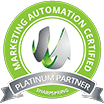The New Way to "Reach Out and Touch Someone" Quickly & For Free
Maybe you're too young to remember the slogan, “Reach out and touch someone” - it was used by Bell Telephone for years in the time when using a telephone was the only way to talk to people (other than face-to-face).
And if you're a child of the 60s, 70s or even 80s, you may remember how expensive long-distance calling was. I remember waiting until 10:00 PM on a Sunday night (when the rates were the cheapest) to call my parents when I was away at school. If I talked for an hour, it cost to $20.00. If you calculate the inflation rate, that was like over $130.00 today! Needless to say, we wrote a lot of letters back then.
We have it so good today with our cell phones. If you're in the U.S., you can call anywhere in the U.S. for free. Plus, with instant messaging and emails, there's no reason not to "reach out."
Here's another time-saving tip for you. (And time is money, so you're saving in another sense as well.)
Enter a phone number in the Facebook Search Bar -- just the numbers -- no dashes or parentheses. This is a quick and easy way for you to find people or businesses on Facebook. From here, you can send a friend request to connect with them. Or, if their page is public, find out what they're promoting or doing.
Help customers find you. As a business owner, make sure your phone number is entered in your Facebook profile, so customers can find you. And don't forget to keep your Facebook page up to date.
That also goes for your LinkedIn and Twitter pages. Also, make sure the links to these pages are promoted on the home page of your website (use their icons and link your pages to them).
Use Facebook, LinkedIn, and Twitter to Sell Your Services or Products.
The first thing to know is that you shouldn't go all in and sell on any social media site. Yes, the natural tendency is to do this, but you shouldn't.
Social media is all about relationship building. It's a great tool for warming up leads for your marketing efforts.
LinkedIn: LinkedIn is a huge prospecting tool that you should definitely be taking advantage of. It's the largest self-updating contact database in the world.
Facebook: Facebook provides tools for marketing as well, (check them out here). Although Facebook is mostly used for B2C (for businesses to attract individual consumers).
Twitter: CIO Magazine provides some specific tips here for marketing your business on Twitter.
Most of the decision makers like CEOs, COOs, and general managing partners use LinkedIn because it's always been built for business networking purpose. As a result, they are much more engaged and focused than those on the other platforms. LinkedIn affords more opportunity for B2B marketing.
And now that Microsoft owns LinkedIn, you have a lot more tools and functionality at your disposal. This makes it worth getting a paid subscription for $80 a month. You can search for businesses in your location or in particular industries.
Once you get some engagement from business leaders, set up Lunch and Learns or invite them to coffee at your local Starbucks. You must do this on a regular basis, just like you do with any of your marketing efforts. We all want that quick fix and sometimes get frustrated. This is the hard part—You must stay with it. Your contacts may not need your products or services now, but they might later. It might take three years, or even more. But if you stick with your LinkedIn marketing program, you'll succeed.
Remember to differentiate yourself. Know who you are and what you can provide. This will help you define your market. For example, you're a marketing company first, and an expert second. Once you view yourself this way, your business will grow.
Speak at local events about a topic that resonates with your audience. Become the go-to expert in the industry you work in. It's all about educating your audience to get and keep their attention. You can do this on LinkedIn as well.
When you finally sit down and meet the people you've connected with, they should feel like they already know you. And you should get to know them too, so you'll understand their unique needs. Don't go in to sell. Go in to get to know your prospect. You'll have a much easier time selling because they'll know you and you'll know them. It's like a referral–and close ratios on referrals are much higher.
Sales Navigator is a new feature on LinkedIn you should try. You can tag people, mark them as leads, and even mark at the account level. Set up a "Dream 25 list" that you want to do business with. You can follow them, see what they post, learn about all their employees and even the "pecking order" in the company.
The big thing about Sales Navigator is its sales and search functionality –you can drill down and find the decision makers like CEOs. You can save search preferences for types of businesses, the size of businesses, titles, and more. Sales Navigator allows you to reach a much broader customer base and allows you to be found much easier.
Plus, if you have sales teams, it allows you to keep their leads if they leave your company. The leads in LinkedIn belong to you, not to them.
If you are marketing outside the U.S., remember that different countries have their own "spam" laws. With LinkedIn, you can use direct messaging to build relationships once you've connected to your lead. So, you don't need to worry about these spam laws. You'll also have 100% deliverability vs. email. And you don't have to worry about your message going into their spam inbox. If you're connected with someone, you don't need to use LinkedIn InMail. You can send direct messages to them because they've accepted your connection.
Educate your clients on LinkedIn. Try uploading an educational webinar on LinkedIn. Teach them how they can benefit from your products or services.
3 Essential Tips to Remember:
- Don't set up your profile page like your website. Your contacts want to know about you as a person. You need to connect with them in a meaningful way. Make your profile appear as a CEO. CEOs like to network with other CEOs. The summary you include is key. The people who have the most success tell their story and how they overcame their challenges. You want people to relate to you and engage with you.
- Know who you're looking for on LinkedIn. Pick a niche market to go after. Those who do have greater success with LinkedIn. You can build a good "warm" list by doing this.
- Be consistent. Take 15 minutes a day to reach out to 10 - 20 people. The more people you get in front of, the better the chance you can broaden your network. You can close a lot of business during coffee meetings with people. And once you've convinced one client, they'll refer others to you. Soon, you'll have new business "falling into your lap!"



